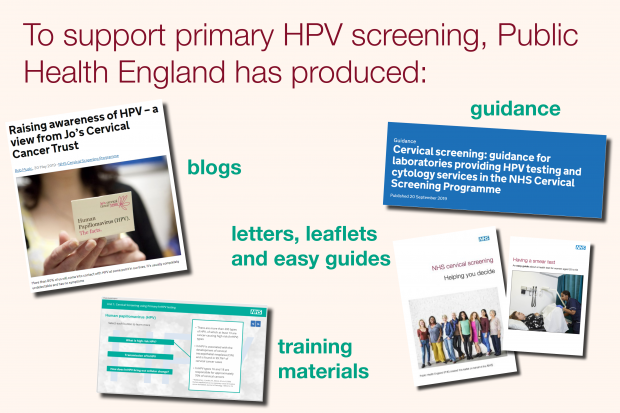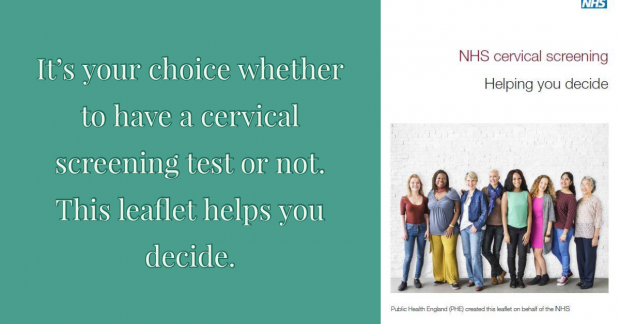
I am delighted to announce that, as of December 2019, primary HPV screening is fully rolled out and being offered across England as part of the NHS Cervical Screening Programme. This significant landmark will improve screening by identifying more women at risk of cervical cancer.
There has been a huge amount of work involving many different organisations and providers to get to this stage.
In this article I’d like to talk about the Public Health England (PHE) contribution and about the opportunities we now have to develop the programme further.
Pilot sites to full rollout
Back in 2013, PHE set up pilot sites in Sheffield, Liverpool, Manchester, Bristol, Norfolk and North West London (Northwick Park).
These pilot sites, together with the HPV pilot steering committee, were vital in laying the foundations and producing the pathways to set out how primary HPV screening could be delivered in the NHS.
The results of the pilots, published in the British Medical Journal (BMJ), provided the evidence to the UK’s independent national screening committee.
In 2016, the UK National Screening Committee recommended that the HPV test should replace cytology as the first (primary) test in cervical screening.
Primary HPV testing has higher sensitivity for high grade cervical intraepithelial neoplasia (CIN) than primary cytology. This means using primary HPV testing will identify more women at risk of developing cervical cancer.
A new screening pathway
The implementation of the new primary HPV screening pathway has been a challenge and has had a major impact on the screening workforce.
All organisations working in the programme deserve a huge amount of credit for their hard work during this significant change.
PHE’s role
Producing guidance and resources takes a lot of time and requires substantial engagement with subject experts and clinicians to ensure they are appropriate for the new pathway.
PHE has produced a suite of new guidance to reflect the new screening pathway. Colposcopy and sample taker training guidance will be published soon.
Other new resources informed by the HPV pilot psychological evaluation study include:
- 2 new patient information leaflets to support invitations to screening and referral to colposcopy
- primary HPV screening invitation and results letters
- education and training resources for primary care and colposcopy

We worked with people with learning disabilities to update our cervical screening easy read invitation leaflet and letter.
Throughout the process, the PHE Screening blog has helped update people on the new guidance, changes and work PHE has been involved in. Make sure you are signed up to the blog so you hear about any further new developments.
PHE is now collecting primary HPV screening data and we will use this to inform and produce new standards to complement the existing ones.
The psychological evaluation helped us design new resources to do as much as we could to reduce the potential anxiety of screening and follow-up.
Collective hard work
The implementation of the new primary HPV screening pathway has been a challenge and there is no one organisation responsible for this major change – it has been a huge effort on all parts, by lots of organisations.
The cervical screening programme team worked tirelessly to ensure the appropriate guidance was produced to reflect the new screening pathway and was ready for roll out. They were supported throughout by clinical professional groups.
PHE’s Screening Quality Assurance Service (SQAS) played a vital role in informing and supporting the new guidance. SQAS teams worked collaboratively, giving expert advice to commissioners and providers on the detail of local transition plans. This ensured they met programme standards while minimising risk during transition.
Opportunities ahead
There are plenty of exciting opportunities ahead now that primary HPV screening is fully implemented.
Currently, eligible people aged 24.5 to 64 in England are invited for cervical screening every:
- 3 years from ages 24.5 to 49
- 5 years from ages 50 to 64
The UK NSC has recommended changing the routine screening interval from 3 to 5 years for eligible people aged 24.5 to 49 who test HPV negative, as part of their routine screen.
We are now working with NHS E to establish the pathways and operational delivery of the 5-year screening interval extension. Once the pathways are agreed, the timescales for this change will be announced.
Self-testing
The move to primary HPV screening makes it possible to use self-testing kits for HPV screening, which could help people who currently find it difficult to attend their appointment.
First though, we need to know how self-sampling could work in practice and the effect it could have on non-attenders, who are at greater risk of developing cervical cancer.
The UK NSC has recommended further studies of self-testing through pilots and research projects.
This is a very exciting opportunity and one we’ll look forward to working on.
Engagement
Wide engagement has been a big part in this work right from the very beginning and we would like to thank every single member of staff involved in the screening programme who worked tirelessly to make this significant change a reality.
PHE Screening blog
The PHE Screening blog provides up to date news from all NHS screening programmes. You can register to receive updates direct to your inbox, so there’s no need to keep checking for new blogs. If you have any questions about this blog article, or about population screening in England, please contact the PHE screening helpdesk.